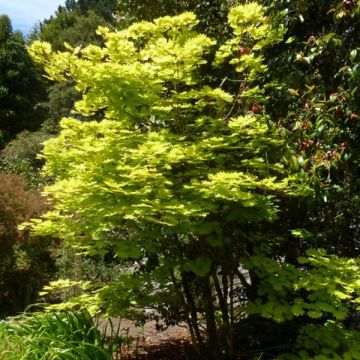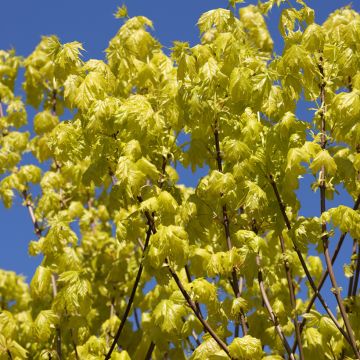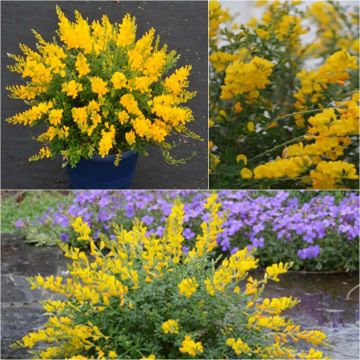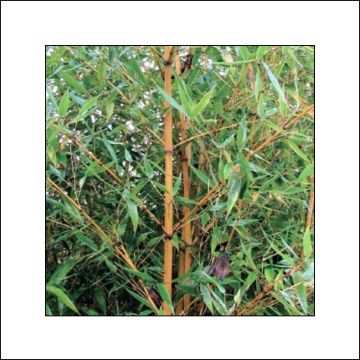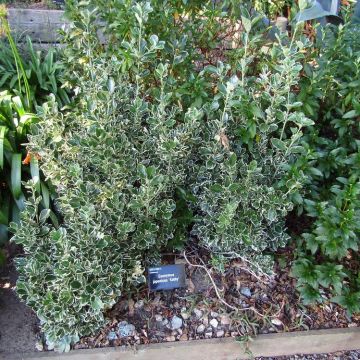

Acer platanoides Globosum - Maple
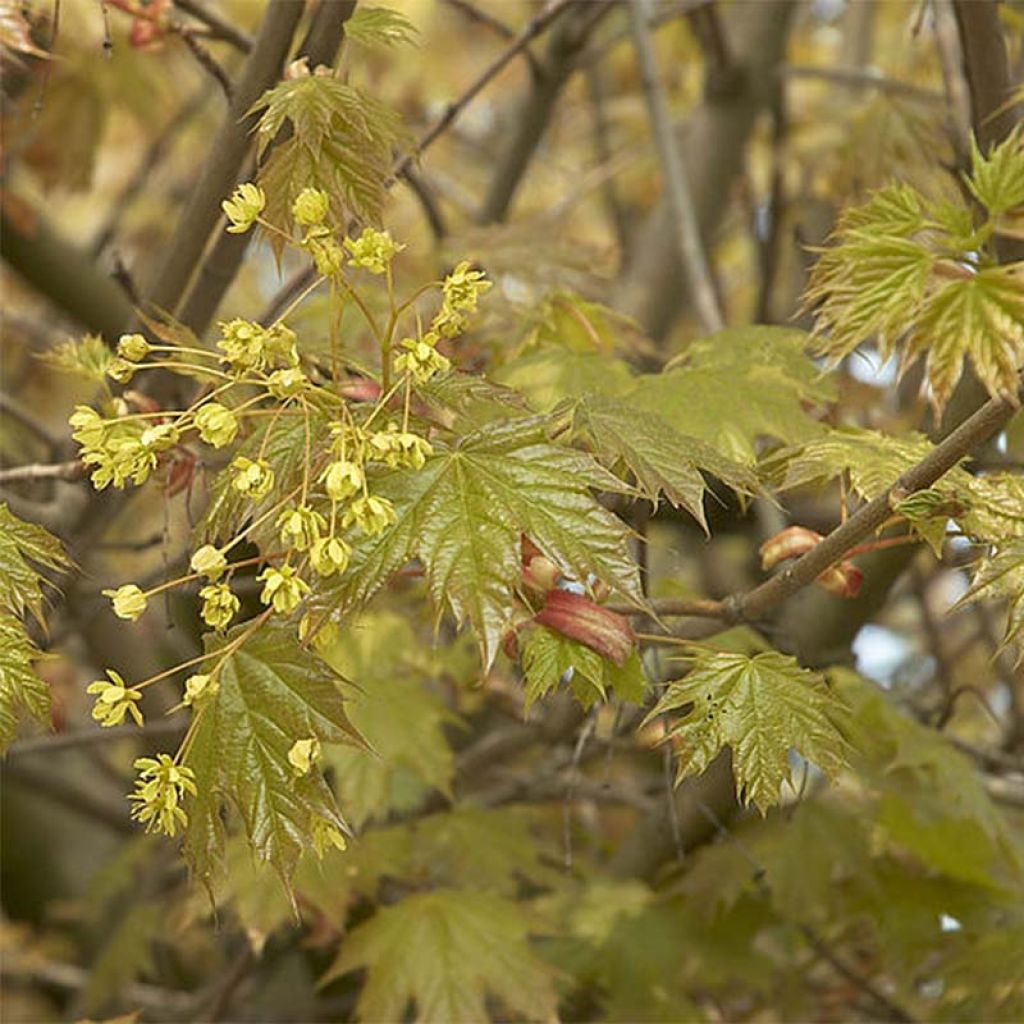

Acer platanoides Globosum - Maple
Acer platanoides Globosum - Maple
Acer platanoides Globosum
Norway Maple, European Maple
Why not try an alternative variety in stock?
View all →This plant carries a 24 months recovery warranty
More information
We guarantee the quality of our plants for a full growing cycle, and will replace at our expense any plant that fails to recover under normal climatic and planting conditions.
From €5.90 for pickup delivery and €6.90 for home delivery
Express home delivery from €8.90.
From €5.90 for pickup delivery and €6.90 for home delivery
Express home delivery from €8.90.
Delivery to Corse prohibited: UE law prohibits the import of this plant from mainland France to Corse as part of the fight against Xylella fastidiosa. Please accept our sincere apologies.
More information

Does this plant fit my garden?
Set up your Plantfit profile →
Description
Acer platanoides 'Globosum' is sometimes called Globe Norway Maple due to the distinctive appearance of its rounded and very dense crown, which gives it the look of a true vegetal parasol. This small-sized tree develops beautifully cut deciduous foliage, of a rather dark green colour, which turns to beautiful yellow to reddish tones in autumn. With moderate growth, requiring no pruning, this variety with its unusual charm is particularly suitable for small gardens. Plant it in ordinary soil, in any exposure.
Originally from the Caucasus, widely spread in Europe from Scandinavia to Spain and eastwards to Russia, Acer platanoides is a large deciduous tree with rapid growth often associated with oak, lime, and elm. It can live up to 200 years. All maples belong to the Aceraceae family.
The Globe Norway Maple was selected in Belgium in 1873. Often grafted onto the Acer platanoides type, the single-stemmed tree forms a typically rounded crown in its first years. It then spreads further, becoming globular and flattened. At maturity, this maple will reach about 8 m (26.2 ft) in height with a spread of 6 m (19.7 ft). When the leaves first emerge, they are slightly tinged with reddish-brown, then quickly turn dark green. In autumn, they become intensely yellow, sometimes tinged with red. The deciduous leaves are opposite and palmate. Measuring 10 cm to 20 cm (3.9 in to 7.9 in) long, they have 5 very sharp, dentate lobes, similar to plane tree leaves. Carried by long petioles, they are glabrous and have a shiny texture. The discreet flowering, in the form of upright corymbs, brings together tiny yellow-green flowers and occurs before the leaves emerge, in March, on subjects aged 15 to 20 years. It is followed, in June, by winged fruits, called samaras, measuring 3 cm to 5 cm (1.2 in to 2 in) in length. The bark covering the trunk is dark grey, almost smooth,and is marked with numerous shallow longitudinal cracks. The bark covering the branches is brown.
Acer platanoides 'Globosum' is a very easy-to-grow, undemanding tree. It is magnificent when isolated in the middle of a small garden or near a terrace, for example. It can also be used as a street tree to border large avenues. Ground cover perennials such as heucheras, tiarellas, stachys, or bergenias can be planted at its base.
Tip: Prune every 3 to 5 years to balance the branches and maintain its habit.
Report an error about the product description
Acer platanoides Globosum - Maple in pictures


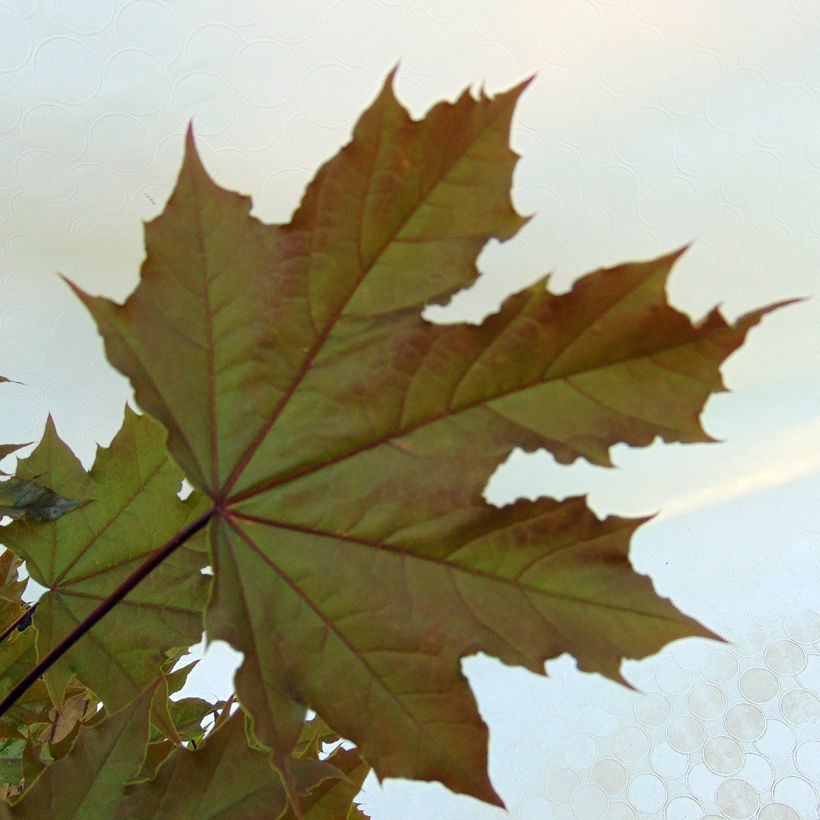



Plant habit
Flowering
Foliage
Botanical data
Acer
platanoides
Globosum
Aceraceae
Norway Maple, European Maple
Western Europe
Other Acer - Maple tree
Planting and care
Plant in spring or autumn in all fertile, deep and fresh soils in a semi-shaded or sunny but not scorching location. It tolerates the presence of limestone in the soil, but requires a soil deep enough to accommodate its powerful root system. Once established, it can withstand summer drought. Beware of strong winds. Keep the soil moist during the first two summers following planting. Mulching can be beneficial to maintain soil freshness. Pruning is necessary for young plants, and then every 3 years to balance the branches and maintain its habit. Do not prune after December as the sap rises very early.
Planting period
Intended location
Care
-
, onOrder confirmed
Reply from on Promesse de fleurs
Hedge shrubs
Haven't found what you were looking for?
Hardiness is the lowest winter temperature a plant can endure without suffering serious damage or even dying. However, hardiness is affected by location (a sheltered area, such as a patio), protection (winter cover) and soil type (hardiness is improved by well-drained soil).

Photo Sharing Terms & Conditions
In order to encourage gardeners to interact and share their experiences, Promesse de fleurs offers various media enabling content to be uploaded onto its Site - in particular via the ‘Photo sharing’ module.
The User agrees to refrain from:
- Posting any content that is illegal, prejudicial, insulting, racist, inciteful to hatred, revisionist, contrary to public decency, that infringes on privacy or on the privacy rights of third parties, in particular the publicity rights of persons and goods, intellectual property rights, or the right to privacy.
- Submitting content on behalf of a third party;
- Impersonate the identity of a third party and/or publish any personal information about a third party;
In general, the User undertakes to refrain from any unethical behaviour.
All Content (in particular text, comments, files, images, photos, videos, creative works, etc.), which may be subject to property or intellectual property rights, image or other private rights, shall remain the property of the User, subject to the limited rights granted by the terms of the licence granted by Promesse de fleurs as stated below. Users are at liberty to publish or not to publish such Content on the Site, notably via the ‘Photo Sharing’ facility, and accept that this Content shall be made public and freely accessible, notably on the Internet.
Users further acknowledge, undertake to have ,and guarantee that they hold all necessary rights and permissions to publish such material on the Site, in particular with regard to the legislation in force pertaining to any privacy, property, intellectual property, image, or contractual rights, or rights of any other nature. By publishing such Content on the Site, Users acknowledge accepting full liability as publishers of the Content within the meaning of the law, and grant Promesse de fleurs, free of charge, an inclusive, worldwide licence for the said Content for the entire duration of its publication, including all reproduction, representation, up/downloading, displaying, performing, transmission, and storage rights.
Users also grant permission for their name to be linked to the Content and accept that this link may not always be made available.
By engaging in posting material, Users consent to their Content becoming automatically accessible on the Internet, in particular on other sites and/or blogs and/or web pages of the Promesse de fleurs site, including in particular social pages and the Promesse de fleurs catalogue.
Users may secure the removal of entrusted content free of charge by issuing a simple request via our contact form.
The flowering period indicated on our website applies to countries and regions located in USDA zone 8 (France, the United Kingdom, Ireland, the Netherlands, etc.)
It will vary according to where you live:
- In zones 9 to 10 (Italy, Spain, Greece, etc.), flowering will occur about 2 to 4 weeks earlier.
- In zones 6 to 7 (Germany, Poland, Slovenia, and lower mountainous regions), flowering will be delayed by 2 to 3 weeks.
- In zone 5 (Central Europe, Scandinavia), blooming will be delayed by 3 to 5 weeks.
In temperate climates, pruning of spring-flowering shrubs (forsythia, spireas, etc.) should be done just after flowering.
Pruning of summer-flowering shrubs (Indian Lilac, Perovskia, etc.) can be done in winter or spring.
In cold regions as well as with frost-sensitive plants, avoid pruning too early when severe frosts may still occur.
The planting period indicated on our website applies to countries and regions located in USDA zone 8 (France, United Kingdom, Ireland, Netherlands).
It will vary according to where you live:
- In Mediterranean zones (Marseille, Madrid, Milan, etc.), autumn and winter are the best planting periods.
- In continental zones (Strasbourg, Munich, Vienna, etc.), delay planting by 2 to 3 weeks in spring and bring it forward by 2 to 4 weeks in autumn.
- In mountainous regions (the Alps, Pyrenees, Carpathians, etc.), it is best to plant in late spring (May-June) or late summer (August-September).
The harvesting period indicated on our website applies to countries and regions in USDA zone 8 (France, England, Ireland, the Netherlands).
In colder areas (Scandinavia, Poland, Austria...) fruit and vegetable harvests are likely to be delayed by 3-4 weeks.
In warmer areas (Italy, Spain, Greece, etc.), harvesting will probably take place earlier, depending on weather conditions.
The sowing periods indicated on our website apply to countries and regions within USDA Zone 8 (France, UK, Ireland, Netherlands).
In colder areas (Scandinavia, Poland, Austria...), delay any outdoor sowing by 3-4 weeks, or sow under glass.
In warmer climes (Italy, Spain, Greece, etc.), bring outdoor sowing forward by a few weeks.










































